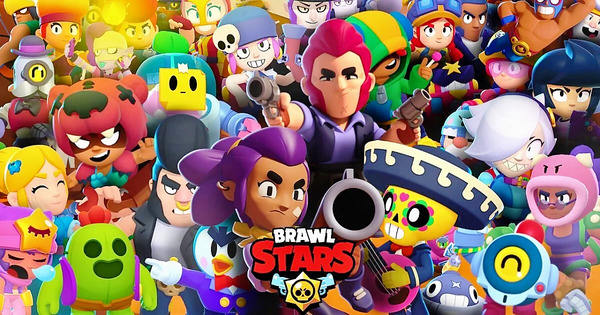Call of Duty: The Evolution of a Legendary Franchise in Gaming History
Few video game franchises have shaped the shooter genre quite like Call of Duty. Since its debut in 2003, the series has sold over 400 million copies worldwide, revolutionizing how players experience war, multiplayer combat, and cinematic storytelling. Developed originally by Infinity Ward and later expanded by Treyarch, Sledgehammer Games, and others under Activision’s umbrella, Call of Duty has transformed from a historical WWII title to a massive multimedia juggernaut spanning futuristic combat, battle royale, and modern warfare.
This expert-level analysis explores the rich history, key releases, gameplay evolution, multiplayer innovations, and future of Call of Duty. Whether you're a seasoned veteran or a new recruit, this article gives you a full-spectrum look at one of gaming’s most influential series.
The Birth of Call of Duty: World War II Roots (2003–2006)
Early Days of Realism and Grit
The original Call of Duty (2003) was a direct competitor to Medal of Honor, aiming to deliver a more immersive and realistic depiction of World War II. It introduced:
-
Squad-based AI instead of a “lone hero” model
-
Real historical battles and locations
-
Authentic weaponry like the M1 Garand and MP40
It was praised for its intense atmosphere and cinematic flair, setting a new bar for WWII shooters.
Expanding the Formula
The next two titles—Call of Duty 2 (2005) and Call of Duty 3 (2006)—further refined the experience with:
-
Console-first development (especially for Xbox 360 and PS3)
-
Enhanced AI and destructible environments
-
Expanding multiplayer support
These games laid the foundation for the series' future blockbuster status.
Modern Warfare Revolution: A New Era Begins (2007–2009)
Call of Duty 4: The Game-Changer
In 2007, Call of Duty 4: Modern Warfare catapulted the franchise into the mainstream with:
-
A modern combat setting for the first time
-
Killstreaks, custom loadouts, and Perks
-
A gripping single-player campaign featuring missions like “All Ghillied Up”
Its multiplayer mode became a cultural phenomenon, introducing millions to online FPS gaming.
Modern Warfare 2 and 3
-
MW2 (2009) expanded multiplayer with customizable killstreaks, prestige, and larger maps
-
MW3 (2011) concluded the trilogy with high-stakes cinematic set pieces and Spec Ops co-op mode
This trilogy redefined online shooters and created the first true esport-ready console FPS.
Black Ops and Cold War Espionage (2010–2015)
Psychological Warfare and Zombies
Treyarch launched its iconic Black Ops (2010) series with:
-
A Cold War-era campaign full of mind-bending twists
-
Popularization of the Zombies mode, turning co-op PvE into a full sub-franchise
-
A high-skill, competitive multiplayer meta
Black Ops II (2012) went futuristic with branching campaigns, drone warfare, and a deeper eSports focus.
Diversifying Mechanics
Subsequent titles like:
-
Black Ops III (2015) introduced wall-running and specialist characters
-
Advanced Warfare (2014) and Infinite Warfare (2016) embraced jetpacks and sci-fi themes
These entries divided the community but demonstrated Activision’s willingness to experiment with new gameplay directions.
Return to Boots-on-the-Ground (2017–2019)
Community Fatigue with Futurism
After several jetpack-heavy entries, fans clamored for a return to realism. Activision answered with:
-
Call of Duty: WWII (2017) — a visually stunning return to the series’ roots
-
Black Ops 4 (2018) — the first CoD without a traditional campaign, focusing on Battle Royale (Blackout) and Zombies
Reinventing Modern Warfare
Call of Duty: Modern Warfare (2019), a reboot of the original, used the new IW engine and introduced:
-
Realistic gun handling
-
Dark, morally complex narrative
-
Ground War (large-scale multiplayer)
This title revitalized the series and set the foundation for the current gameplay standard.
Warzone and the Battle Royale Boom (2020–Present)
Warzone’s Impact
Released in March 2020, Call of Duty: Warzone became an instant hit with:
-
150-player lobbies
-
Gulag respawn system
-
Cross-platform play
Warzone brought the franchise into the free-to-play model, competing with Fortnite and Apex Legends, and attracting over 100 million players globally.
Integration with Annual Titles
Warzone has since been integrated with:
-
Black Ops Cold War (2020)
-
Vanguard (2021)
-
Modern Warfare II (2022) and Warzone 2.0
Though some integrations were rocky, it created a shared ecosystem across titles, unified by the Call of Duty HQ launcher.
Campaign Mode: The Blockbuster Movie Experience
Storytelling at Its Best
Call of Duty campaigns are known for:
-
Hollywood-style direction
-
Tight pacing and memorable characters
-
Missions like:
-
“No Russian” (MW2)
-
“All Ghillied Up” (MW1)
-
“Clean House” (MW 2019)
-
These moments showcase CoD’s ability to create tense, emotionally impactful scenarios.
Replayability and Realism
With added realism modes and player choice:
-
Modern Warfare campaigns now support stealth or brute force
-
Some missions include non-lethal options, environmental storytelling, and multiple outcomes
Multiplayer: The Core of the Franchise
Evolving Gunplay and Meta
Multiplayer across CoD titles is known for:
-
Fast-paced TTK (time to kill)
-
Dozens of maps, modes, and weapon types
-
Killstreaks and scorestreaks
Recent entries have added:
-
Gunsmith 2.0 (MW2 2022)
-
Perk Packages and Field Upgrades
-
Weapon progression trees
This keeps the sandbox fresh and endlessly customizable.
Ranked and Competitive Play
Modes like:
-
League Play (Black Ops)
-
Ranked (MW2 2022)
-
CDL Rulesets (Call of Duty League)
Provide a gateway to high-skill competition and esports progression.
Zombies Mode: Cult Classic to Staple
From Fun Gimmick to Deep Lore
Introduced in World at War (2008), Zombies has grown to include:
-
Complex Easter Eggs and storyline arcs
-
Perk systems, weapon upgrades, and unique maps
-
Fan-favorite characters like Richtofen and Dempsey
Treyarch’s entries—especially BO1, BO2, BO3—are often considered peak Zombies.
Spin-offs and Innovations
Later titles have offered:
-
Open-world zombies (MWZ in MW3 2023)
-
Round-based classics
-
Chaos and Aether universes
Zombies mode alone could be a full game—and fans often treat it as such.
Monetization, Battle Pass, and Community Reception
Battle Pass and Storefront
Since Modern Warfare 2019, Call of Duty has used:
-
Seasonal Battle Passes (100 tiers)
-
Cosmetic Bundles (operator skins, tracer rounds, executions)
-
Weapon blueprints and reactive skins
While optional, some fans criticize:
-
High pricing of premium bundles
-
Overpowered paid blueprints during early seasons
Crossplay and Accessibility
Recent games offer:
-
Cross-progression across platforms
-
Accessibility settings (colorblind, subtitles, controller configs)
-
Cross-platform chat and lobbies
Future of the Franchise and What’s Next
Modern Warfare 3 (2023) and Beyond
Modern Warfare 3 (2023) serves as both a continuation and bridge to upcoming changes:
-
Carry-forward progression
-
Expanded open-world Zombies
-
Refined movement system (slide cancel returns)
Fans expect continued support for Warzone and possibly a shift to live-service Call of Duty with fewer annual releases.
New Engine, New Era?
With Microsoft’s acquisition of Activision Blizzard finalized, the Xbox/PC integration may change:
-
Game Pass availability
-
Cross-title synergy
-
Platform priority and development roadmap
Call of Duty’s future looks ambitious—and potentially transformative.
Pros and Cons of Call of Duty
Pros
✅ Satisfying, responsive gunplay
✅ Variety of content: Campaign, Multiplayer, Zombies, Warzone
✅ Crossplay, seasonal content, live events
✅ Top-tier visuals and cinematic presentation
✅ Huge player base and strong esports presence
Cons
❌ High file sizes (100–200GB+)
❌ Repetitive annual releases fatigue some players
❌ Monetization can feel excessive
❌ Skill-based matchmaking (SBMM) is divisive
❌ Inconsistent innovation year-over-year
Final Rating of Call of Duty
| Category | Rating (Out of 10) |
|---|---|
| Gunplay and Controls | 9.5 |
| Campaign and Storytelling | 8.7 |
| Multiplayer Depth and Variety | 9.0 |
| Zombies Mode | 8.5 |
| Warzone and Battle Royale | 9.2 |
| Visuals and Audio | 9.6 |
| Monetization Balance | 6.8 |
| Community and Esports Support | 9.1 |
| Overall Experience | 8.9 / 10 |
Conclusion: Call of Duty Is More Than a Shooter—It's a Cultural Phenomenon
Call of Duty has spent over 20 years dominating the FPS genre, not just with groundbreaking gunplay, but by creating a complete entertainment package: cinematic campaigns, online arenas, undead thrill rides, and competitive ecosystems.
While it faces challenges—particularly around monetization and innovation—its strengths in community, accessibility, and gameplay fidelity continue to make it a household name. Whether you’re dropping into Warzone, grinding Ranked, or revisiting classic missions, Call of Duty remains a benchmark for what action games can be.




























